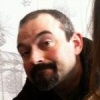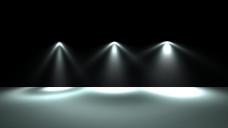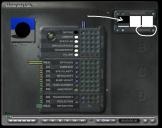IES conversion experiment
 David Brinnen
Posts: 3,136
David Brinnen
Posts: 3,136
Hopefully this link will work.
https://www.dropbox.com/s/a6n4tiz37mi9733/Spherical_light_maps1.zip?dl=0
So here's the idea. There are these IES files that are apparently ascii files that provide light profiles for real world lights and can be used to drive emitters in some rendering software. Like Octane. But not Bryce. So, I wondered if there was some rough and ready way to make something similar for Bryce using gels. So I made a little setup in Octane to spherical map an IES driven light source and then, after much value fiddling, got settings that produced a rendered output that could be used in Bryce that "sort of" simulated the effect. Obviously this is not a perfect conversion. I don't know the dynamic range of the IES files but probably the rendered png's are nowhere near.
But anyway, I thought it might be worth experimenting with.
Images.
First image shows the selection of IES's I've converted, they are in alphebetical order from lef to right. So in the example shown in (image two), you see "XArrowSoft". The 30th and last. All three light sources have the same image applied. The variation can be easily achieved by streatching the point light source along its Y axis (image three the wireframe).
Image four shows the light lab settings needed. The diffuse set accordingly to your scene. Use "Use Gel" and image to load in the image. And then remember to click on Procedrual and modify the mapping mode to "Spherical" since it defaults somewhat unhelpfully to "Sinusodial" for reasons which I've never been able to fatham.
Anyway, feel free to have a go and let me know what you think.












Comments
IES = Illuminating Engineering Society. Interesting. Thanks for the PNG files. First experiments show that a radial light becomes a spot light. Obviously, size of the radial matters. Since the maps are spherical, only radials work, but that's not a limitation since the map "transforms" the radial to a spot.
I don't think the dynamic range of the "gels" is of an issue. After all, it is not the light source, the light intensity is set with diffuse and the gel only attenuates it here and there.
However, if the IES files (the original ones) could be used as a light source (which they can be in other 3D programs), that would be another matter. I've looked at some IES files (from Philips) and to my shame I must admit that I cannot interpret the values, and I find it funny that the wattage (43.6 W) is specified for a voltage (120 V) as if the wattage would change for another voltage, e.g. 240 V, only the current changes (half), not the power. But I can see that the values - those I don't understand - were measured at a distance of 20 ft, around 3 m from the lamp.
Anyway, I think your gels are great and may come in handy in an indoor scene. Gels are great, we just don't use them often.
Thanks for sharing this David. Another alternative to apply lights sources in a scene.
I don't think that we could use that kind of light in some landscape scene.. a good news for interior renders however.
Thanks Horo, I'd have put money on you being the first to try these out and indeed I would have even go so far as guessing you'd try out some other colours.
In Octane the IES is applied to a quad, a square, the smaller the better to privide definition. Since they work as distribution modifers on the gemometry normal. I chose spherical mapping as the way to capture this effect since the distribution could (in theory) cover an entire hemisphere. Though to be fair most of the "action" occurs directly underneath the spot. There are however a wide variety of these IES's out there and some do have radically wide distributions, so I thought to go with spherical was the safe bet.
What got me onto this topic, was spending several hours in Octane trying to figure out how to re-create the underwater effect that we have made in Bryce with caustics. And as a result got bogged down in trying to understand the way emmitters worked and reverse engineering gels for Octane light sources. And then ended up turning that idea on its head.
In case you are curious, here's the result I got in Octane for underwater effect after a lot of head scratching. And in spite of what people might think, Bryce isn't really that much slower than Octane when it comes to creating this kind of effect and equally fiddly in my hands.
Edit. Sorry c-ram, crossed with you. Yes, not much use for outdoor, though it would be possible to SM record the shadows of clouds and map them into a gel. Fine if your camera happens to be pointing at the ground.
Thanks David, interesting experiments, downloading it now.
David - yup, light is what makes visual art visible. What I can't stand is when I can't understand a file format so I had to figure it out. The essential thing is that the important data values are candelas at a particular vertical and horizontal angle. The file I scrutinised has values for 69 vertical and 17 horizontal angles which adds up to 1173 position with a candela value to create a light source.
I copied the "gels" into the Content\Light Gels folder, they will come in handy. I seldom use gels but I got quite enthusiastic when I used a gel for shadows and prepared the PDF on parallel light gel.
OK, not exactly a great piece of art but just to show how these gels can be used. I created an HDRI from the first one and it can be seen in the sky and it gives ambient light. Then, I used the same gel on an a distant light and here, the position of the wireframe matters. The bright line in the valley is created by the distant light. This all opens new possibilities to explore and exploit.
Horo - a nice render, I like it, I think these lights will be great for surreal scenes.
David and Horo: Great to see you experimenting in Bryce again, David! We all profit from your innovative ideas. Horo, of course, the first to try out new things. I like the strange light on the terrain a lot.
Thank you for sharing this with us, David, it looks very interesting. I'll need to do a bit more Bryce studying before I can use it but that should be interesting as well.
If you are going for realism then what c-ram said is probably true since these are profiles for indoor lights. But Horo has shown they can give you some great artistic effects on outdoor scenes.
The attached IES.zip contains the HDRIs and Gobo I made from David's files. Please read the PDFs in the Comments folder. ZIP content:
IES\
- Comments\
- IES-Gobo.pdf (describes Gels)
- IES-HDRI.pdf (describes HDRIs)
- HiDyn\
- 32 name_H.hdr files
- MiDyn\
- 32 name_L.hdr files
- IES-Gels.lst contains 32 pictures for picture materials on a radial